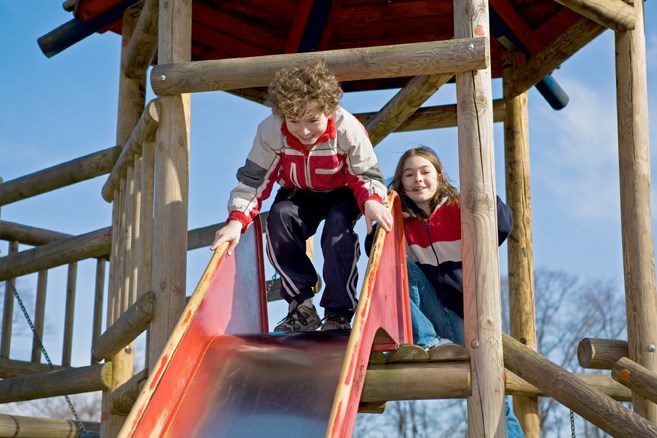Do you remember when you were a kid and you climbed a tree, or went on a hike in the woods, or jumped on your bike with your buddies and went to the park for a picnic?
These are pretty typical memories for today's adults. Oh, and when you participated in these activities you weren't supervised by any adults. It was just you and your friends.
These memories are important. We learned how to challenge our bodies in ways that were safe and effective, how to find our way from home to the park or the woods and how to organize a picnic in the park. These activities were integral to our growth and development. Risk-taking and independent play are important for kids to learn how to try new things, how to problem-solve and how to recover when things don't go well.
What are our children's memories going to look like? Based on the 2015 ParticipACTION Report Card, our kids will not have these memories.
The report card (formerly the Active Healthy Kids Canada Report Card) was released recently in concert with an evidence-informed Position Statement on Active Outdoor Play. It finds that access to active play in nature and outdoors - with its risks - is essential for healthy child development.
"We have lost the balance between short-term safety and long-term health. In outdoor play, risk doesn't mean courting danger, but rather giving kids the freedom to assess their surroundings and make decisions, allowing them to build confidence, develop skills, solve problems and learn limits," states Dr. Mark Tremblay, chief scientific officer, ParticipACTION Report Card. "Kids move more when they are outside, have some freedom to roam unsupervised and engage fully with their environments, which will set them up to be more resilient and less likely to develop chronic diseases in the long run."
Research shows that kids are more likely to be physically active when playing outdoors and less likely to engage in higher levels of physical activity if a parent or supervising adult is present. Despite this, safety concerns lead to excessive supervision and keeping kids indoors. But, is outdoor play really something to fear?
I would guess that we would all agree that kids need to be more active. The problem is that we are also obsessed with keeping them totally safe. We want them to avoid risk because we see that as dangerous. But there is a difference between danger and risk. Risky play is thrilling and exciting. And yes, there is the possibility of an injury, which can usually be cured with a Band-Aid and a kiss.
When we keep kids indoors we are not doing them any favours. According to a recent report from the RCMP, the risk that a stranger will abduct your child off the street is one in 14 million, and this risk is cut dramatically when kids are in a group. Meanwhile, that same child who is safely in her home is more likely to be exposed to cyber-predators and to snack on unhealthy food. Air quality is worse indoors, with increased exposure to common allergens. And in the long term, sedentary behaviours increase the odds of developing chronic conditions such as heart disease, diabetes and mental health problems. When our children are constantly supervised they may be active, but they are not learning how to become independent, how to problem-solve and how to explore their environment.
It starts with our toddlers. Yes, they need supervision, but they also need to be permitted to direct their own play and work out solutions to problems such as getting stuck behind the couch, or putting too much sand in the pail so that it's too heavy to carry.
Letting our kids go and letting them become independent and play at the park with their friends is a process.
Once they are in elementary school it's time to teach them how to walk to school on their own with the other kids in the neighbourhood so they all walk together.
It's not a big step to let them take themselves to the local park as a group.
"In order to help ensure Canadian children get enough heart-pumping activity, we need to recognize that they are competent and capable to go out and explore on their own or with friends," states Elio Antunes, president and CEO, ParticipACTION. "This will also allow them to have more fun and learn how to manage and assess risks independently. Children move more, sit less and play longer in self-directed outdoor play, so the biggest risk is keeping our kids supervised indoors."
To download the 2015 ParticipACTION Report Card highlight report, including the position statement, or the 58-page full report, visit participactionreportcard.com.
Kathy Lynn is a professional speaker and author of Vive la Différence, Who's In Charge Anyway? and But Nobody Told Me I'd Ever Have to Leave Home. If you want to read more, sign up for her informational newsletter at parentingtoday.ca.



